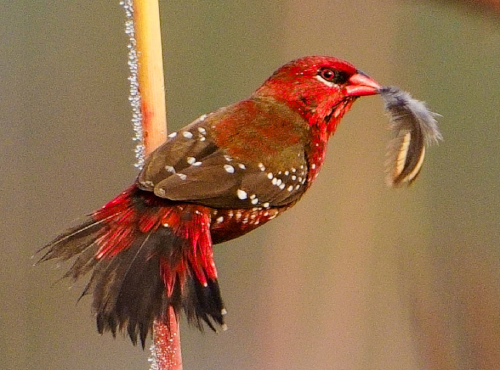When one thinks of visiting West Bengal it’s either Kolkata or Darjeeling. However, if you like to go off-the-beaten pat then north West Bengal is a great place to explore. The region beyond Darjeeling is stunning – an abundance of nature and solitude, wildlife and flora and destinations not frequented by many.
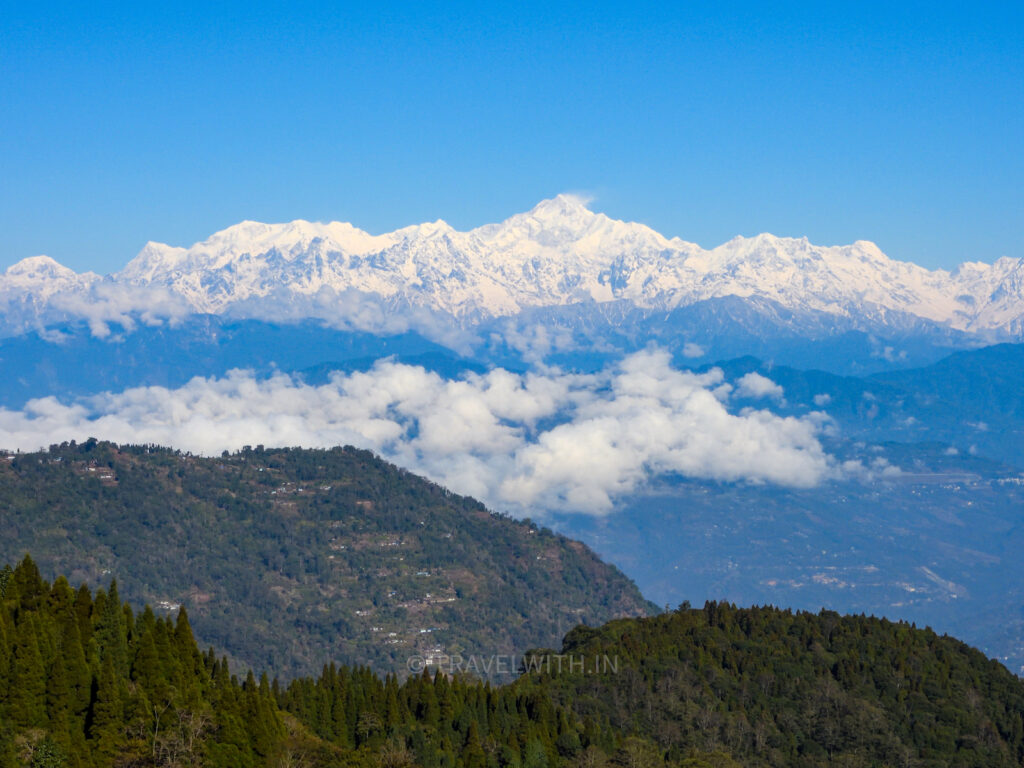
Kanchenjunga Mountain Range from Lava in Neora Valley National Park
We recently visited parts of north West Bengal, areas beyond Darjeeling and what we saw is definitely writing about. Unfortunately, the weather was not in our favor but regardless, the destinations way exceeded our expectations. If you love nature, wildlife and are constantly searching for places that are far from mass tourism, then you should definitely consider visiting the below. These closest airport is Bagdogra and most of these places are a 4-5 hour drive from it.
Singalila National Park
Singalila National Park is a 5 hour drive from Bagdogra Airport and 1.5 hour drive from Darjeeling. The National Park is on the border with Nepal and is ideal for travelers looking to re-connect with nature. The Park offers stunning views of the Kanchenjunga mountains and Mt. Everest on a clear day. Singalila is also the place you would want to visit if you’re interested in spotting the elusive Red Panda.
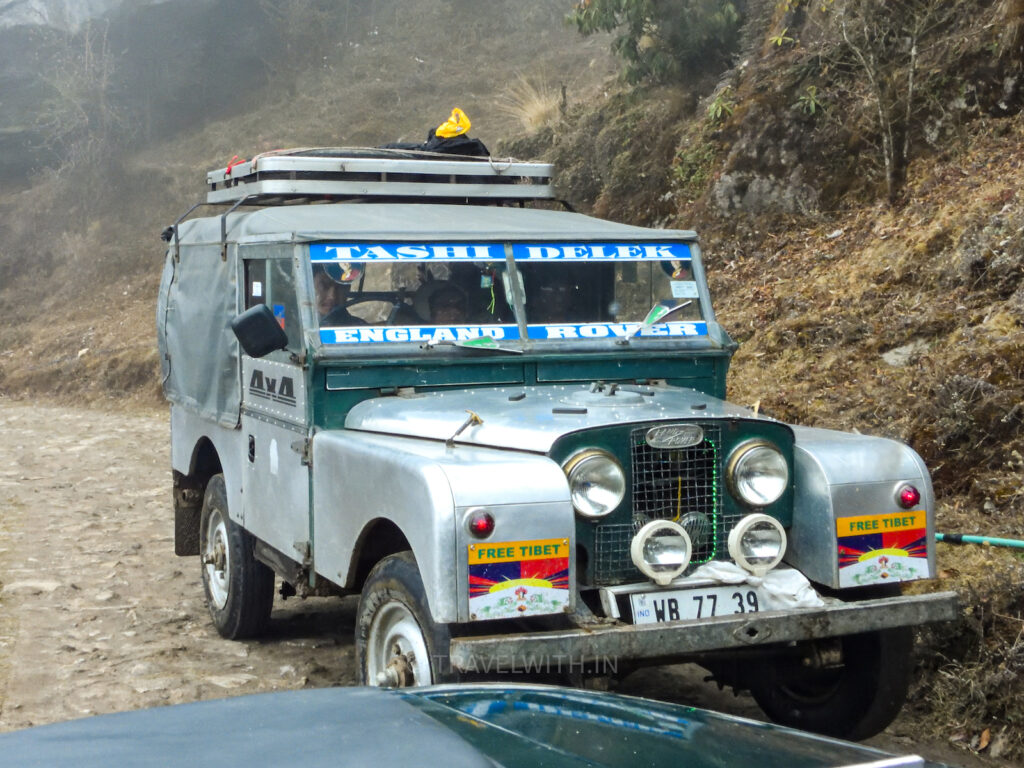
Vintage Land Rover as taxi in Singalila
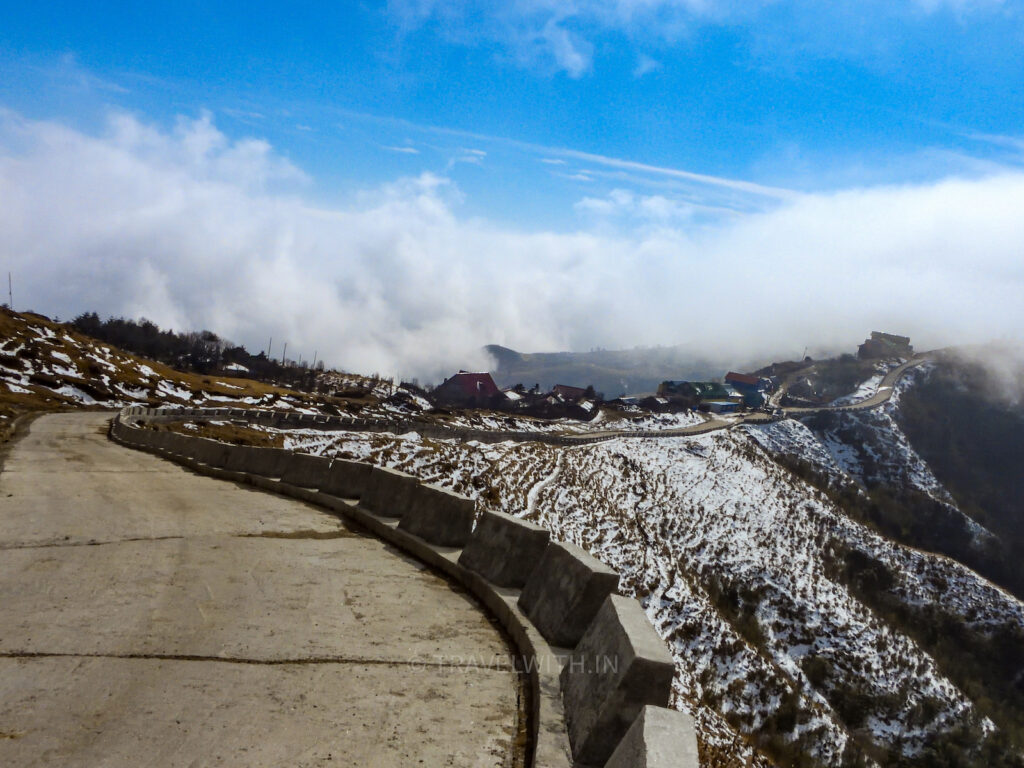
On our way to Gairibas
To get to Singalila, you need to first get to Mane bhanjang in West Bengal which is a three hour drive from Bagdogra airport. From Mane bhanjang it’s a steep drive up the mountains which is done in a 1950s 4×4 Land Rover (left behind by the British but modified for present day travel). It is also at Mane bhanjang that you need to get permits for visiting the National Park and organize your guides and equipment if you plan to trek all the way up to Sandakphu. Getting the required permits, hiring experienced guides and completing other formalities can be taxing but we are happy to help you plan your holiday and take care of all the nitty gritty.
Singalila National Park is well known for the Red Panda. This critically endangered species sleeps during the day and comes out to forage on bamboo leaves and shoots early mornings and at dusk. Due to bad weather when we were there, we didn’t get a chance to spot any but the journey from Mane bhanjang to Gairibans and further to Kala Pokhri definitely made up for it. We didn’t make it to Sandakphu (highest point) as the roads were snowed in. Spotting red pandas is not easy, you need to dedicate at least 4-5 days focused on scouting for the red pandas. It requires a lot of man-power to search for them as the area is vast. Trackers are sent out every morning and it’s only when they spot one that you get a call to get to the location. Other then red panda, the area is home to several species of birds and mammals such as the clouded leopard.
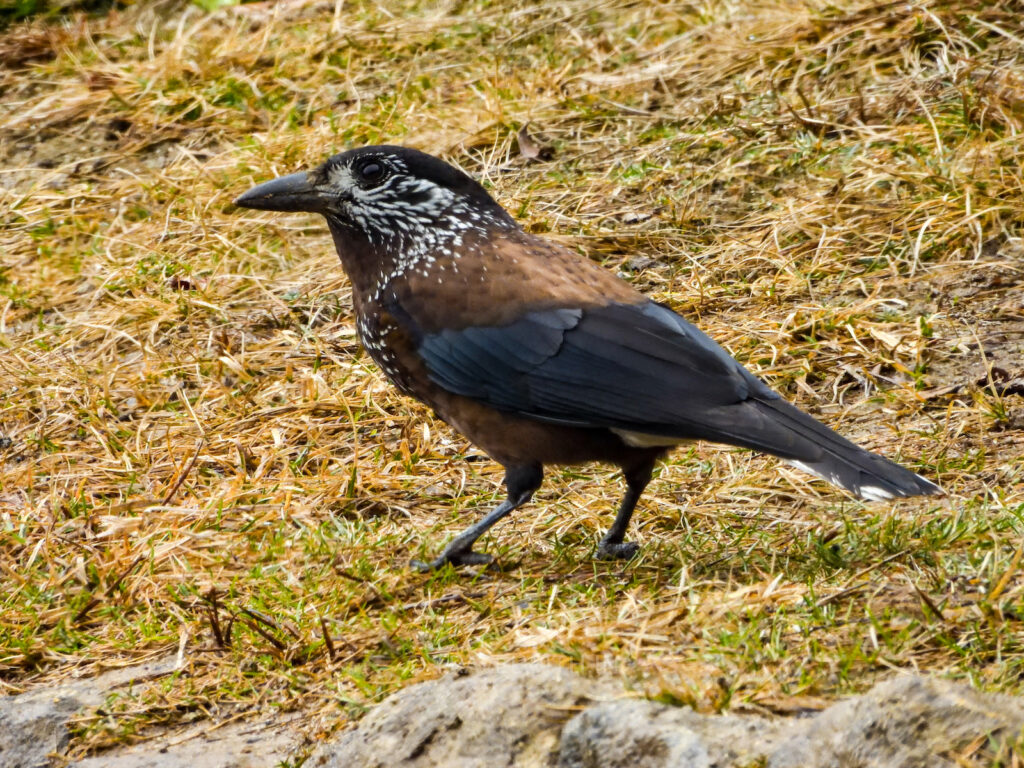
Spotted Nutcracker
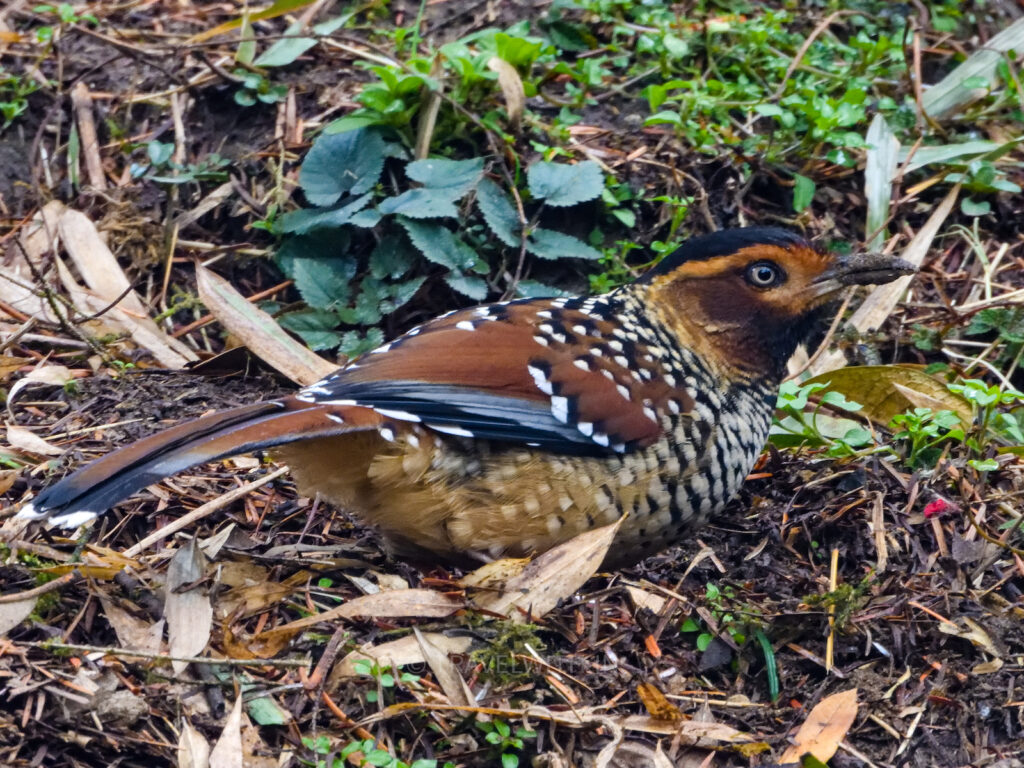
Spotted Laughingthrush
Other than a couple of lodges and home stays most hotels in Singalila offer very basic amenities and services. We stayed for a night at the trekkers hut which was very very basic and we had to check out the very next day in to a more comfortable hotel. The location was ideal but it was too cold to stay in the hut. Perhaps in the summer when it’s warmer these trekker huts would be a more practical option to stay in.
From Gairibas we hiked in to the dense forests of Singalila hoping and praying to spot a red panda and other elusive birds like the satyr tragopan but unfortunately it rained and we had to head back. The forests are really dense and scattered with a variety of rhododendron trees (which bloom in March-April) and other vegetation, primarily bamboo. As such, spotting fauna in Singalila requires a lot of hard work and patience.
Singalila National Park
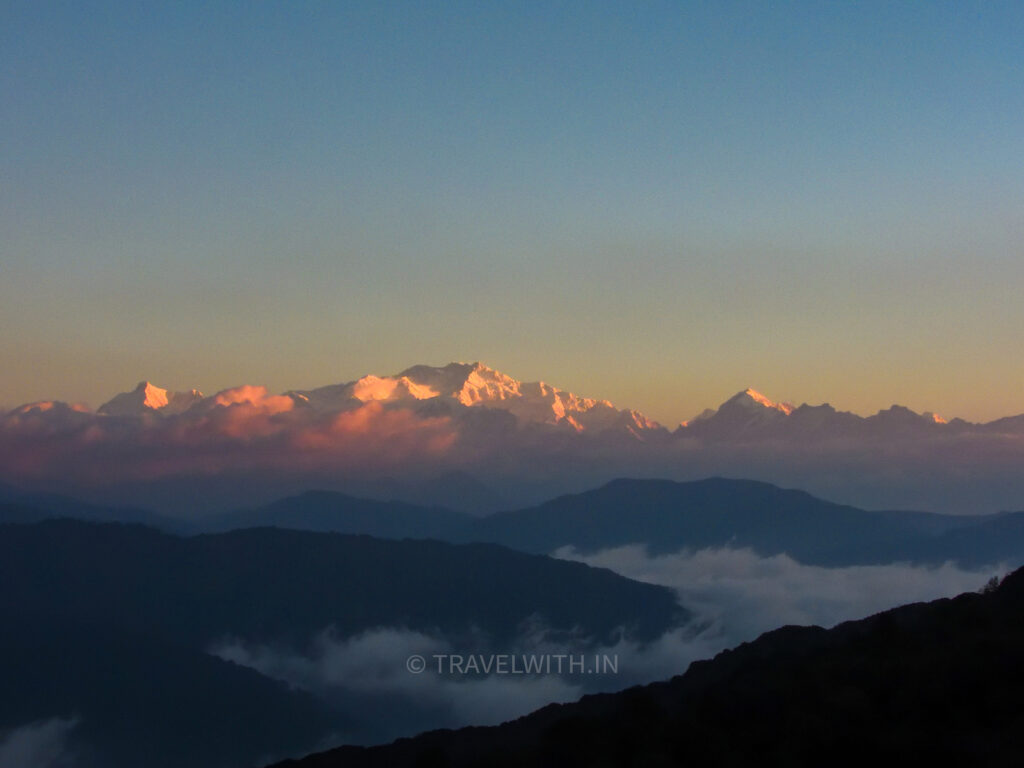
Mount Kanchenjunga or Sleeping Buddha at sunrise
After a couple of days, we made our way back to Tumling which is at 2,900 meters and actually falls in Nepal. The view of the Kanchenjunga mountains from Tumling was stunning and the place we stayed in was a major upgrade from the trekker hut. Hot food, warm clean rooms and a common dining hall where everyone got together in the evening to share their travel stories. For spotting red pandas plan to visit from March through May/June (before the monsoon).
Mahananda Wildlife Sanctuary
From Singalila we made our way to the Himalayan foothills and arrived 3 hours later in Mahananda Wildlife Sanctuary. We were glad to get rid of our inners and hang out in one less layer of clothing. We stayed in Latpanchar, a small village at 1,200 meters which offers travelers several clean and friendly home stays at reasonable prices (no luxury, just basic). From Latpanchar, Mahananda Wildlife Sanctuary is a 10 km drive.
To make the most out of your time here, a local guide and a taxi is highly recommended to take you to various places including the wildlife sanctuary. Also, there are no organized jeep safaris inside the sanctuary, you have to park your car at the entrance and then walk everywhere with your guide. The wildlife sanctuary also has a two bedroom forest rest house (FRH), you can book this by contacting West Bengal Forest Department. The FRH is very basic and not up to modern standards and you may need to get your own rations for cooking, clean linen and drinking water. Alternatively, we can organize your stay in a nice clean homestay and also provide you an experienced local guide for spotting birds and other fauna.
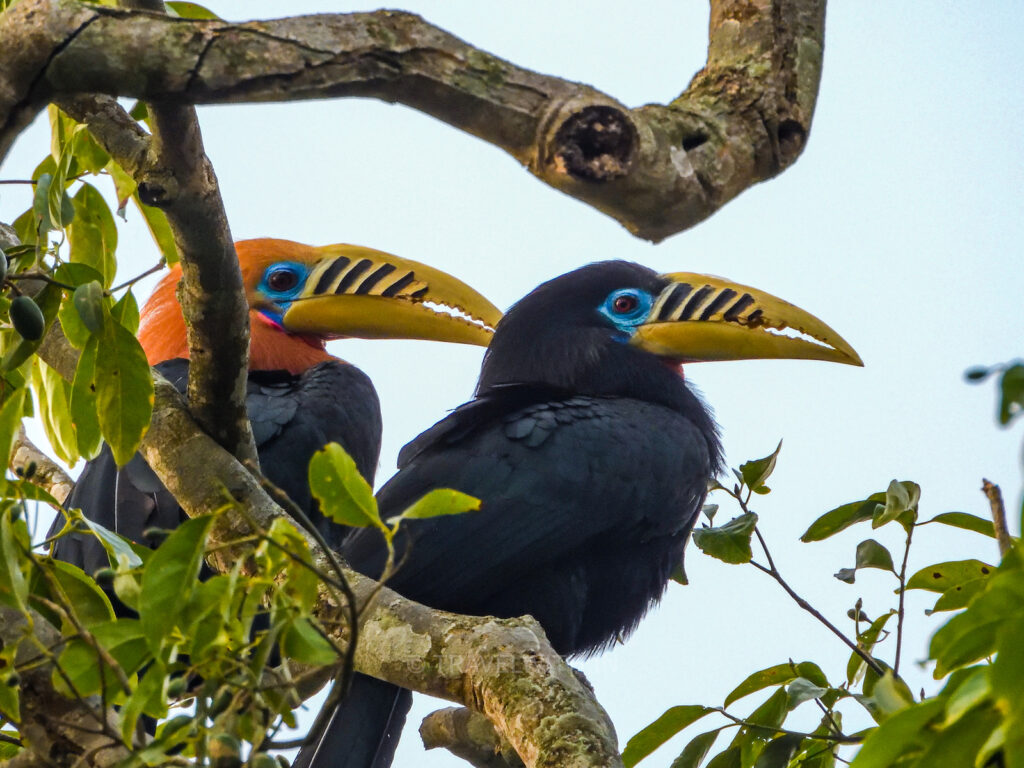
A pair of Rufous-necked Hornbills
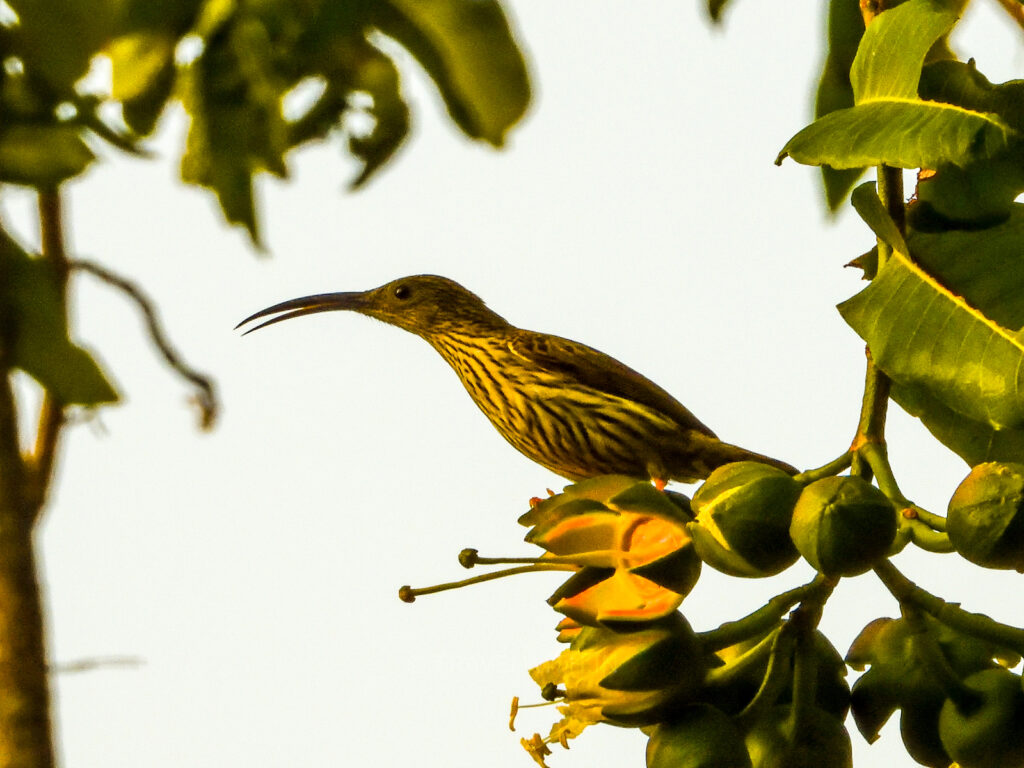
Streaked Spider-hunter
Historically, the village of Latpanchar was developed by the British who planted Cinchona trees, the bark of which is used to treat malaria and other diseases. Today, Latpanchar is mostly off the tourist radar and offers travelers an alternative hill town feel minus the traffic and crowds.
It’s close proximity to major cities (Darjeeling 2.5 hours and Bagdogra Airport 2 hours) and to the most part undisturbed forests offer several wildlife spotting opportunities with the most prized being the Rufous Necked Hornbill, Sultan Tit, Himalayan Newt (amphibian seen during the monsoon) and the Malayan Giant Squirrel, besides others.
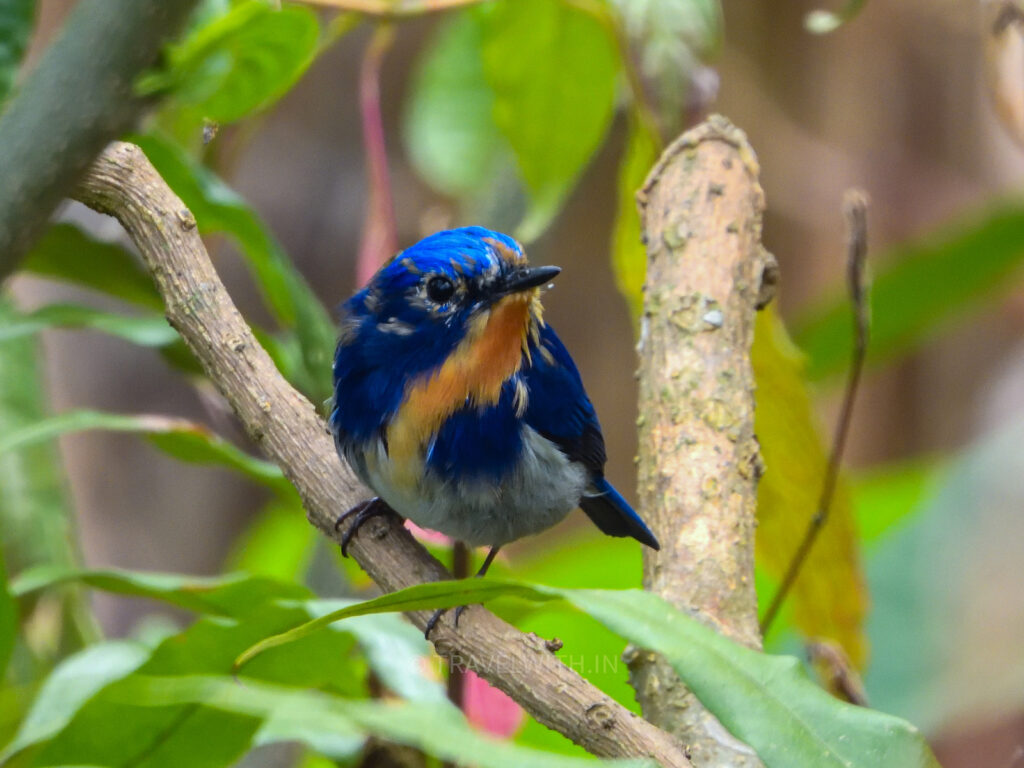
Sapphire Flycatcher
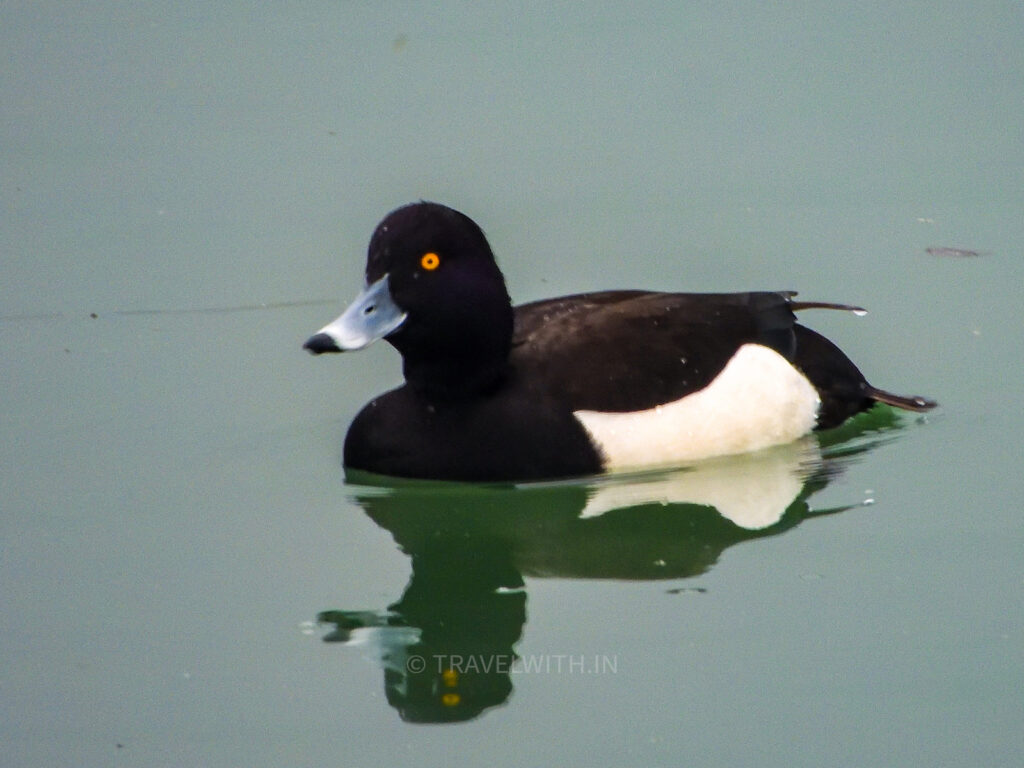
Tufted duck
Gajoldoba
Home to the massive Teesta barrage on the Teesta river in Jalpairguri district, Gajoldoba is part of the dooar or duar or in English the ‘gateway’ region. Dooar are the floodplains that are formed by the Teesta river in North West Bengal and is synonymous with the Terai region in North India. It takes an hour and half to get to Gajoldoba from Bagdogra Airport. We can book a taxi for you from the airport to Gajoldoba and beyond. Guides and naturalists can be arranged as well.
The barrage and surrounding forests are home to several species of migratory birds and you can see them up close by doing a boat ride organized by local fishermen. The boats are comfortable for two people. On a clear day you can even see the Kanchenjunga range. Best time to visit if you’re interested in migratory birds is from November to March.
Teesta Barrage Boat Ride
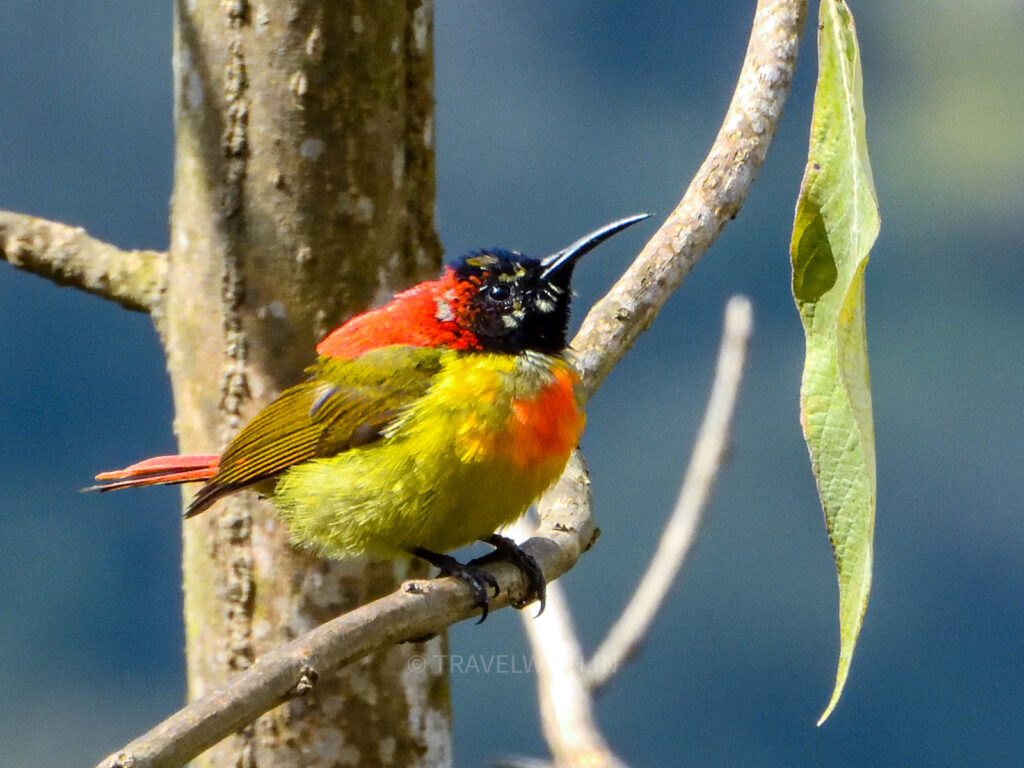
Golden-throated Barbet
Neora Valley National Park
A two and half hour up-hill drive through scenic lush green spaces took us to the village of Lava in Neora Valley National Park. Lava is a 3.5 hour drive from Darjeeling. Spread over, 150 sq km, Neora Valley National Park borders Sikkim in the North and Bhutan in the East. Neora Valley’s highest altitude is 3,200 meters and as such, the Park supports a wide variety of climatic conditions from tropical to sub-alpine. Because of this altitude variation, the Park is host to a variety of flora and fauna.
Some of the above locations are high on every wildlife and bird enthusiasts list – red panda, golden cat, clouded leopard, satyr tragopan, brown parrot bill, red headed bull finch, scarlet finch etc are much desired by every wildlife enthusiast.
Lava was our base during my time in Neora Valley National Park. The Park’s entrance is about a 10 KM drive from Lava. You could also stay in the next big town – Rishop, however the roads to Rishop are not at all great and bumpy to the most part. The stay options in this region are limited and not by any means luxury. You should come prepared to rough it out here, hopefully it will be worth it and you will be rewarded with good sightings of wild animals.
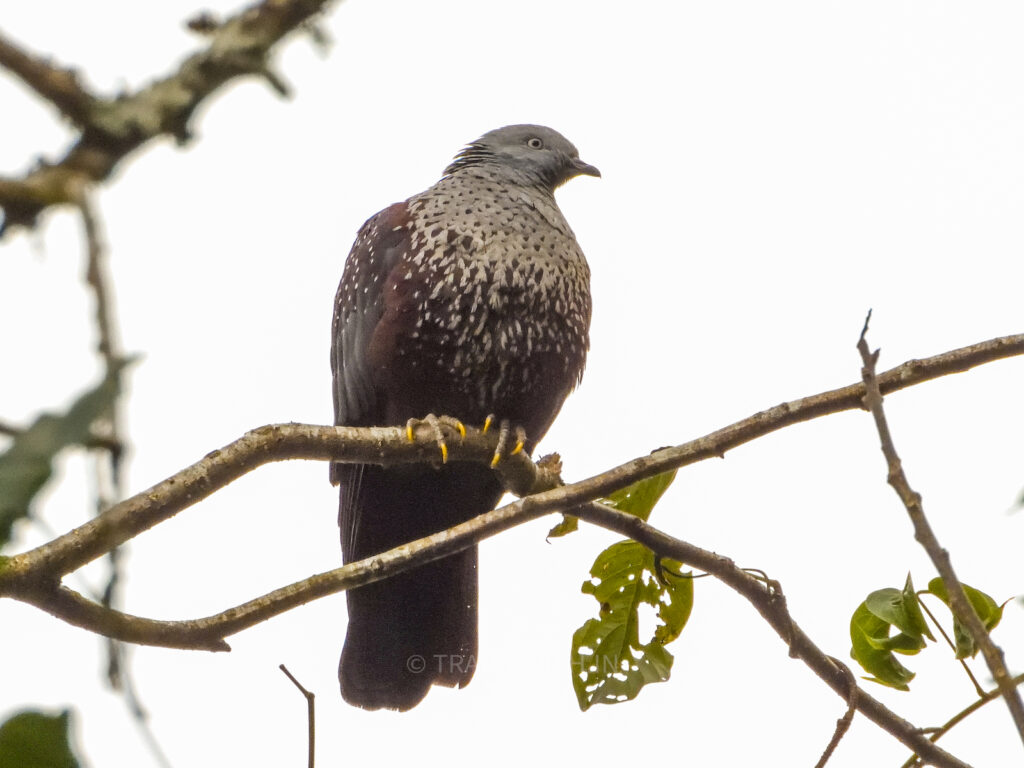
Speckled Wood Pigeon
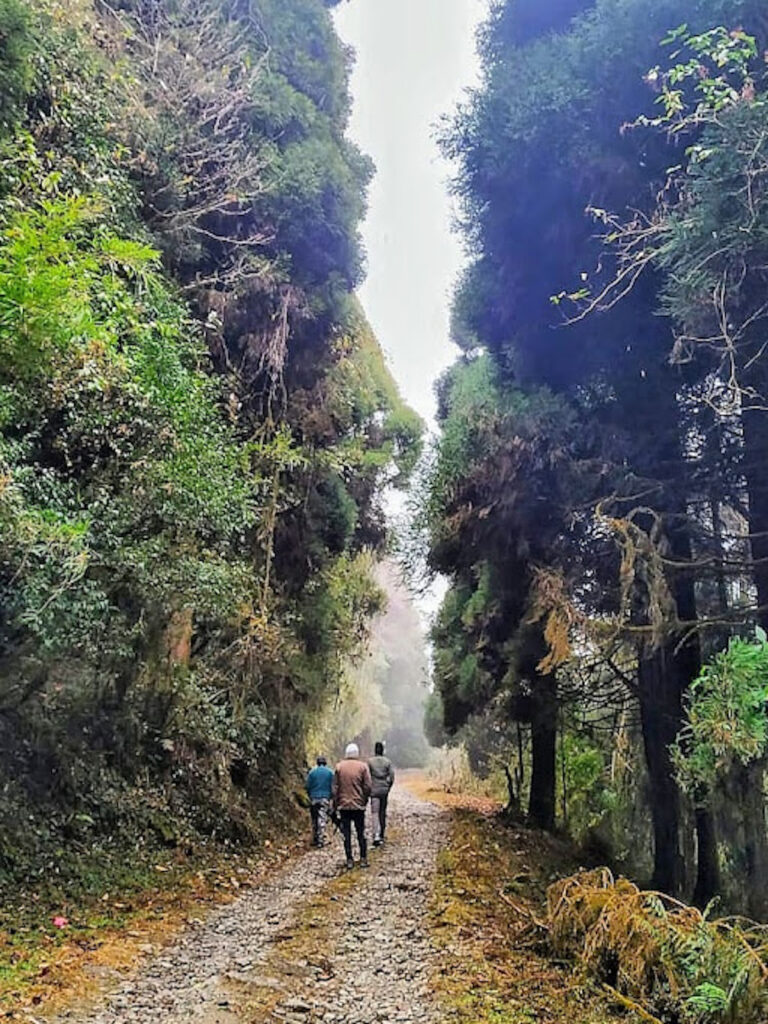
Hiking in Neora Valley National Park
Neora Valley is not just for the bird watcher or wildlife enthusiast, you can have a pretty good time if you simply enjoy being outdoors and in nature. A 15 km walk through the forest from the entrance of the Park will take you to Zero Point.
Views of Nathula pass are outstanding on a clear day. A local guide and a vehicle is essential during your time here as the area is vast and there are leopards and black bears too. If you plan to do all the above destinations, you should plan at least 12 days to factor in time for travel and in the event of bad weather. We will happy to organize a custom made tour to all or some of these destinations.
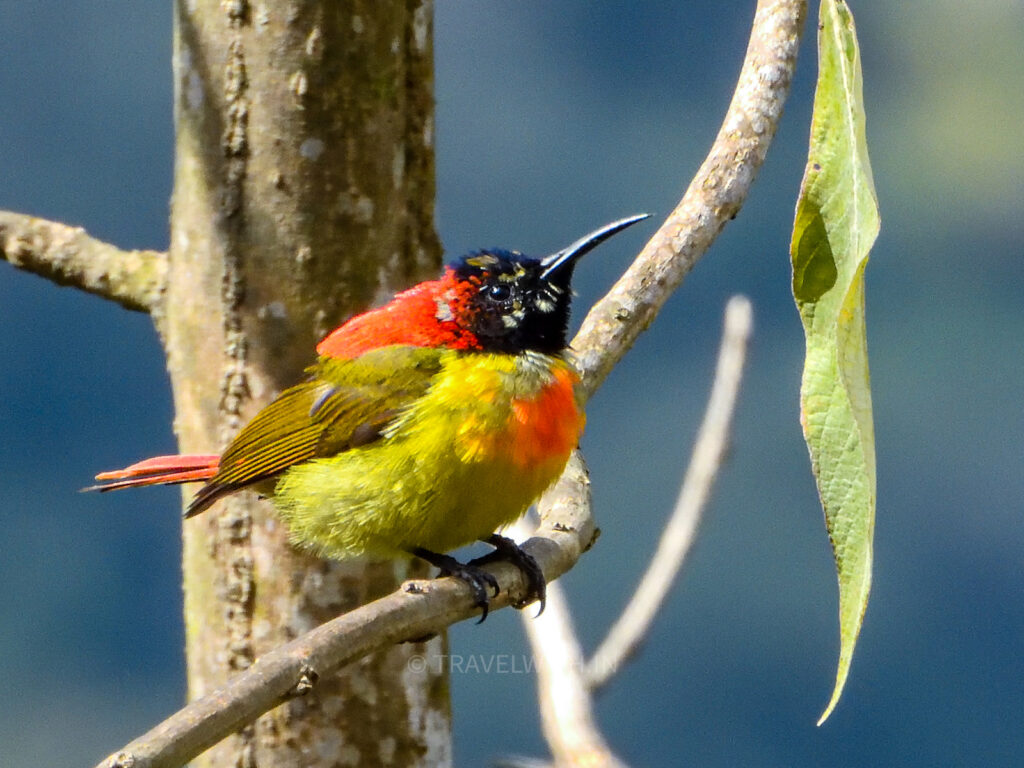
Fire-tailed Sunbird



